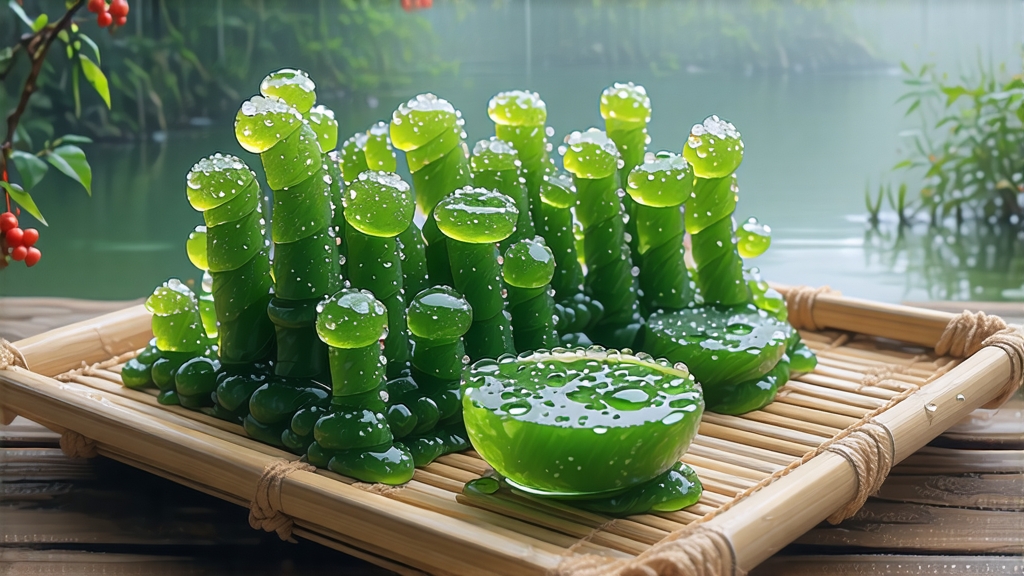
Biluochun, whose name translates literally to “Green Snail Spring,” is one of China’s ten most celebrated teas, yet it remains a delicate secret outside serious tea circles. Produced only in a narrow strip of hills hugging Lake Tai in southern Jiangsu, this tea carries within its tightly spiraled leaves the cool mists, fruit blossoms, and mineral-rich soils of a microclimate no larger than Manhattan. To understand Biluochun is to listen to a soft-voiced story that begins in the Tang dynasty, ripens under the Ming, and still unfolds each March when the lake’s morning fog meets the first warm breeze of spring.
Historical whispers
The earliest written record appears in the Tang-era Classic of Tea, where Lu Yu mentions a “Xia Sha Ren Xiang” (literally “scaring people with its fragrance”) picked on Dongting Mountain. By the late Ming, when the Kangxi Emperor visited Lake Tai in 1699, the tea had already adopted its snail-like shape and was renamed Biluochun to honor its jade color and early-spring harvest. Court chronicles describe imperial boats lingering offshore so that the emperor could drink it within hours of plucking, a logistical obsession that elevated the tea to tribute status and fixed its reputation for almost three centuries.
Micro-terroir: one lake, two peaks, three gardens
Authentic Biluochun comes only from Dongting East and West Mountains—two granite islands rising from Lake Tai. The water body moderates temperature, creating nightly fogs that act like a slow diffuser, shading tender buds and locking in amino acids. Soils are quartz-sand mixed with eroded limestone; drainage is swift yet mineral-rich. Within this tiny zone, three gardens define quality tiers:
• Mingfeng Xiaoyuan (literally “Cave of Singing Phoenix”) sits highest, where 300-year-old tea bushes share terraces with loquat and wild plum. Their simultaneous bloom gives the leaf its signature fruity bouquet.
• Linwu Peak faces due east, catching first light; buds here are smaller, frost-tipped, and prized for the sweetest liquor.
• Shigong Mountain’s south slope is warmer, yielding a grassier style favored in export markets for its brighter cup.
Cultivar and plucking code
Only the original Dongting small-leaf cultivar (Camellia sinensis var. sinensis cv. Biluochun) is legally protected under China’s GI status. Picking begins when the lake’s surface temperature holds at 10 °C for three consecutive days, usually between the Qingming and Grain Rain solar terms. The golden rule is “one bud with the just-opened first leaf, 1.5–2.0 cm long, 0.12 g fresh weight.” Experienced pickers finish before 9 a.m.; after that, rising sap increases bitterness. Roughly 70,000 such sets yield one kilogram of finished tea.
Crafting the spiral: six hours from garden to wok
Unlike pan-fired Longjing or baked Huangshan Maofeng, Biluochun is shaped entirely by hand while the leaf is still wet, a technique locals call “killing green in the morning, curling in the afternoon.”
- Withering: 30 min on bamboo trays set under shade nets; moisture drops 5 %, making the bud supple.
- Fixation: A 260 °C wok is swabbed with fresh pomelo peel to perfume the surface; 250 g of leaves are tossed for 3–4 min until the famous “green stripe, red tip” appears—enzymes halted just as chlorophyll edges oxidize.
- Rolling & spiraling: Temperature drops to 70 °C. Using a spiral wrist motion, the master presses the leaf against the wok while simultaneously twisting. Bud and leaf wrap around each other, forming the signature spiral shell. The motion must complete before the leaf cools below 45 °C, or the shape will not set.
- Primary drying: 50 °C for 10 min reduces moisture to 30 %.
- Final drying: Charcoal embers at 40 °C for 40 min; a layer of white tissue paper prevents scorch while allowing subtle smoke. Finished tea contains 5 % moisture and resembles tiny jade snails covered in an almost invisible down.
Grading: scent, shape, and down
Top-grade Biluochun carries five silver-white hairs on every millimeter of leaf; when tipped into a white porcelain gaiwan, the hairs swirl like lake mist. Lesser grades lose either the down (indicating rough handling)